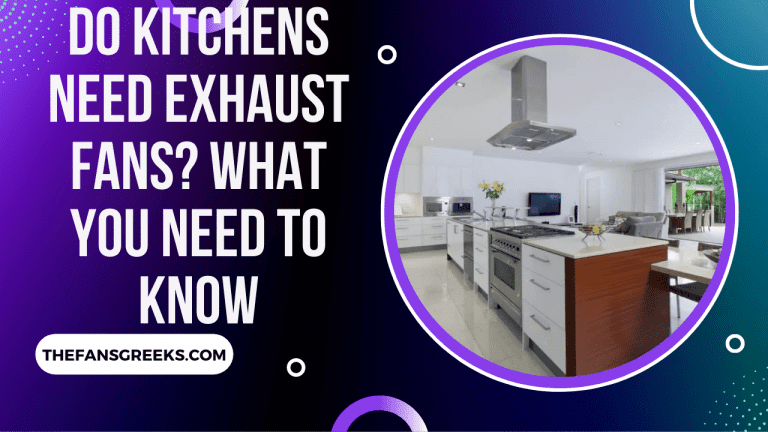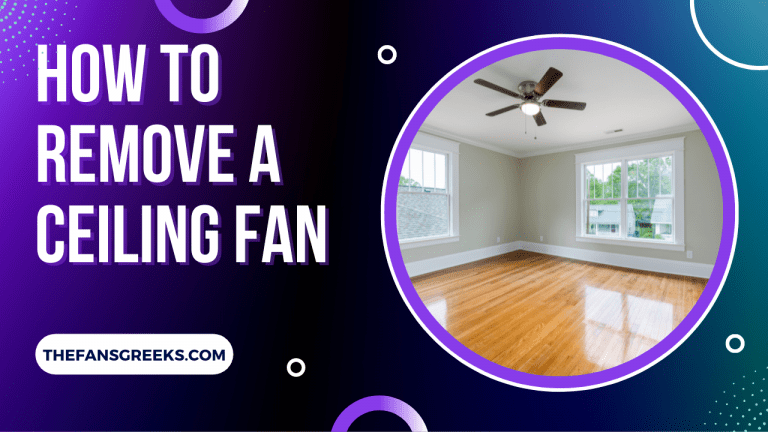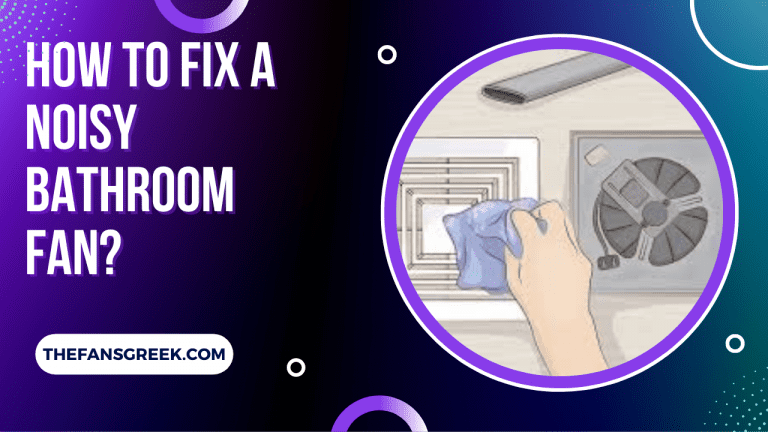Do Kitchens Need Exhaust Fans? What You Need to Know
Indoor air quality should be maintained by taking significant measures. A good way to avoid humid air in your kitchen is to ventilate it frequently, but does that mean installing an exhaust fan?
Since there is no code requiring exhaust fans in kitchens, they are not required. In addition to improving indoor air quality, kitchen exhaust fans may also protect the health of people living in the house. Cooking produces moist air and odors, which they remove.
This article will explain in great detail why kitchen exhaust fans are so important. Also discussed are how exhaust fans work, the type of range hood you should purchase, and how to use range hoods to their best advantage.
Importance of an Exhaust Fan in Your Kitchen
The act of cooking is essential to everyone, but if you are not careful, it can be dangerous for your health. You are exposed to toxic gases and ultra-fine particles as a result of cooking, which is emitted into the air by the stove and circulate throughout the building.
As a result, oil, fats, and grease are released into the air, settling on surfaces such as cabinets and walls. Grunge is created as a result of the oils over time. Asthma sufferers may experience persistent odors or even health problems without a kitchen exhaust.
Changing curtains and wiping furniture and surfaces frequently may also be necessary to remove the food smell that collects every time you cook. The installation of a kitchen exhaust fan can also help prevent grease and smoke from collecting on the walls and ceiling.
The temperature in the kitchen can also be regulated with an exhaust hood. There is a lot of heat produced by stoves whenever you cook. Kitchen moisture increases when there is no proper ventilation.
The moisture in the kitchen gathers as water after the temperature cools down. You risk damaging food items, countertops, and finishes when you fail to clean the water.
Mold can also grow as a result. Whether or not you cook food, condensation is a huge problem. In order to prevent such a scenario from occurring, you must install a proper exhaust system.
By opening windows and using gaps on walls and floors, it was easier to control such problems in the past. However, the approach was functional, even if it wasn’t completely efficient. As modern houses are sealed to reduce energy consumption, such a hit-or-miss approach might not work.
How Does a Kitchen Exhaust Fan Work?
Known as a range hood or hood fan, your kitchen exhaust fan is located above the stovetop. Range hoods are classified as either ductless or ducted before we get to how they work. What is the difference between them?
DUCTED RANGE HOODS
Most exhaust fans are of this type. Due to the fact that they need to transport the air out of the kitchen, their installation may be limited in some kitchens. Because of this, they must only be installed in certain areas of the kitchen. Pipes connect the range hood to a duct that transports foul odors and dirty air outside.
As a result of food preparation, moisture and vapor create moisture in the kitchen that exhaust fans effectively remove. Ductless fans cannot do the same. In case you don’t have enough experience, you can leave the installation to an expert.
DUCTLESS RANGE HOODS
There is no air drawn out of the house by these exhaust fans. By filtering and cycling back to the kitchen, they reuse the air they suck. A carbon and charcoal filter blows back the clean air from the range hood before it is recirculated.
Unlike their counterparts, they don’t require ductwork to transport the air outside, so you can install them anywhere. Filters need to be cleaned occasionally and replaced every year to extend their lifespan.
Due to the lack of piping or ductwork, ductless fans are easy to install. If your exhaust fan has connection guidelines, you can follow them.
DO KITCHEN EXHAUST FANS NEED TO BE VENTED OUTSIDE?
In the kitchen, an exhaust system is installed to ensure that lingering cooking odors and excessive hot air are removed. If you prefer an unvented/ductless range hood, you will still be able to choose between a vented/ducted range hood.
When it comes to energy efficiency, vented range hoods are more efficient. Due to its pipes, it lets fresher and less humid air into the system, so its fan doesn’t blow too hard. As a result, your utility bills can be reduced.
A range hood without a ventilator, on the other hand, requires more power to remove the hot air, clean it, and return it back to the kitchen. In this case, your utility bill may be higher. With technology advancing, it is possible to find unvented exhaust fans that do not consume a lot of electricity.
Venting a range can also be extremely inconvenient, especially in condos and apartments. In order to transport the gases outside, a piping system is required. To install the ducts inside your apartment, you may have to overhaul the ceiling or even the walls.
In addition, a small kitchen may not allow you to do this. Due to their versatility, unvented range hoods are suitable for all types of kitchens and can fit in any space.
If you do not want to worry about maintaining the range hood, you can install a ducted range hood. In spite of the rigors of installation, it can take several years before repairs are necessary. Taking into account ductless range hoods, it is a different story.
Keeping a ductless hood clean and replacing filters annually is one of the most important parts of maintaining it.
The exhaust fans, both ducted and ductless, do not all have exactly the same features. Neither has a definite advantage or disadvantage. The choice is therefore up to you based on your needs and preferences. Ventilated or unvented exhaust fans are both available.
How to Get the Most From Your Range Hood
Range hoods should always be installed close to the cooking surface. Those invisible particles circulating in the kitchen and cooking gases cannot be effectively captured by the fan’s suction if the fan’s suction is not effective.
Nevertheless, it shouldn’t be too low, since it can impede your cooking. Installation 24 inches (60.96 cm) above the stovetop is highly recommended.
A lot of stoves come with hoods that are properly matched to the stove. Installing a stand-alone hood, however, requires a great deal of care. To avoid bumping your head on it while cooking, it should be large enough to effectively cover the cooking surface.
Summing Up
Your kitchen’s air quality can be improved by installing an exhaust fan. In a commercial kitchen, exhaust fans are essential, but in a residential kitchen, the rules are very different.
You can still choose between a ducted or ductless range hood, depending on your preferences. Before making your decision, carefully consider both options.
Consider the hood’s size, the fan’s power, the design, and the noise level before you make a purchase.

![My Bathroom Fan Won’t Turn Off [FIXED]](https://www.thefansgreeks.com/wp-content/uploads/2022/08/My-Bathroom-Fan-Wont-Turn-Off-768x432.png)


![How to Clean NuTone Bathroom Fan [Step-by-Step Guide]](https://www.thefansgreeks.com/wp-content/uploads/2022/08/How-to-Clean-NuTone-Bathroom-Fan-768x432.png)

